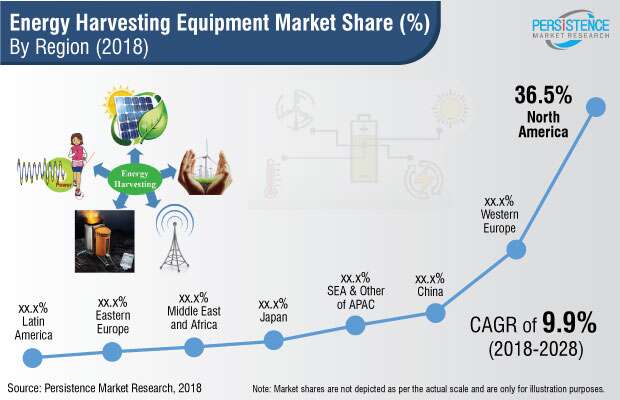The latest PMR (Persistence Market Research) report highlighted the growth of the sector, thanks to various measures adopted by various governments and organizations to deal with unprecedented emergencies or failures of any device. Furthermore, it is expected that the growing adoption of consumer electronics will consequently increase the global adoption of energy harvesting equipment solutions.
Energy-saving initiatives are a key driver in the growth of the energy harvesting equipment market. Companies are considering a whole series of tools necessary for energy harvesting to satisfy the growing demand for energy.
Growing concerns about the environment and the desire to save energy are some of the factors that are supporting the acceptance of technology at a deeper level in society. Applications related to IoT, building automation, and the strong demand for energy savings will be the driving forces of the energy harvesting market. The automotive industry will be another pivotal market, given the growing demand for clean energy in vehicles.
Several countries from different regions offer incentives and investments for research and development in energy harvesting. The development of Smart Factory and IoT technologies and the desire to replace batteries less frequently (or to not use any at all) are among the other key factors that should drive the global market.
The latest PMR (Persistence Market Research) report highlighted the growth of the sector, thanks to various measures adopted by various governments and organizations to deal with unprecedented emergencies or failures of any device. Furthermore, it is expected that the growing adoption of consumer electronics will consequently increase the global adoption of energy harvesting equipment solutions.
The growing disposable income of consumers and the growing adoption of advanced consumer electronic devices such as smartphones and laptops worldwide, particularly in developing countries such as China, India, etc., are some of the main factors driving the market globally. The commercial segment is expected to have a relatively lower CAGR than the global one (figure 1).

Figure 1: Energy Harvesting Equipment market [Source: Persistence Market Research]
Many companies are investigating sophisticated energy harvesting methods that involve several sources, each of which can contribute a small amount of electricity; these include the body's movements, infrastructure vibrations, RF radiation and solar energy.
In the field of high-power systems, photovoltaics is the solution that is set to be the cornerstone of the market, with new challenges related to efficiency gains estimated at over 30%. In the low power field with wearable devices and mobile phones, kinetic, thermal, and RF energy solutions should drive the market globally at a considerable pace.
Consumer electronics products such as computer peripherals, surveillance cameras, electronic bracelets, watches, and much more are also contributing to the demand for energy harvesting. These are applications that will rely on piezoelectric and photovoltaic technology. The increase in investments in the defense segment becomes the main factor of market proliferation with further investments in the coming years.
Mechanical vibration can be tapped from a variety of environmental sources, from busy roads to the electricity grid. There is a huge opportunity in our environment to convert vibration into energy, for example, vehicular traffic and even walking movements can be used to generate a few mW of energy.
The emergence of wearable sensors is creating enormous growth opportunities for the market. For example, in September 2017, scientists from the National Institute of Science and Technology in Ulsan (UNIST) in South Korea, developed an energy-harvesting clothing sensor capable of generating energy from ambient heat.
Similarly, the growing integration of wireless sensor networks shape the future of the market. It is expected that technological advances in materials, device integration, and production processes in the thermoelectric energy (TEH) sector will play an important role in managing global energy demands, resolving electricity shortages and creating sensors and self-sufficient batteries.
Depending on the type of vehicle, the global market for energy harvesting in the automotive sector can be segmented into plug-in hybrid electric vehicles, hybrid electric vehicles, and battery electric vehicles. Among the three, the hybrid electric vehicle segment represents a leading market share. In the coming years, the segment should maintain its dominant share by expanding to a robust CAGR of 22.2% in the next five years.
Energy harvesting solutions allow electronic systems to operate in an autonomous mode where there is no conventional power source. Power conversion and management are generally the core of modern energy harvesting systems.
Maurizio holds a Ph.D. in Physics and is a telecommunication engineer and journalist. He has worked on various international projects in the field of gravitational wave research. He collaborates with research institutions to design data acquisition and control systems for space applications. He is the author of several books published by Springer, as well as numerous scientific and technical publications on electronics design.


Leave your comment
Note: HTML is not translated!